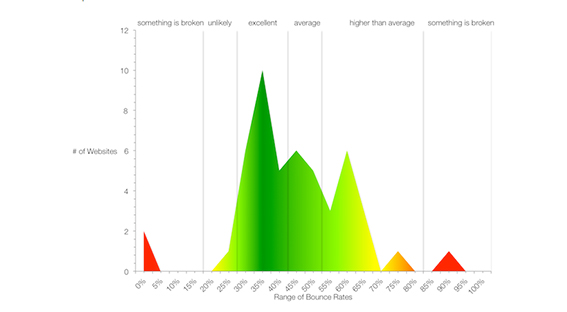
By Sakshi Sakhlecha,Chief Design Officer, at Hyper DesTech
Your website offers the most useful services for customers and has arrangements for the most actionable plans to support their problems and advocate solutions. However, considering your online presence, this is only half of the job done. The primal point of contact with potential customers, the one who surf the internet, is your website and you have to position it in such a way that it becomes the locus for attracting leads. The bounce rate is an illustration of your website’s caliber to fetch leads, as a higher bounce rate is an off-putting matter of concern for both the sides of the trade. The following steps are a trajectory that needs to be traced by financial companies, in order to keep a check over their bounce rate and prevent it from hindering the flow of leads.
Step 1:
Get Google analytics to present the facts
Google analytics largely plays the role of a magic wand that analyses and cohesively presents the scattered particulars and demographics relating to your website. With all your website’s analytics at your disposal, you only have to extract the most important parameters that should act as your baseline. In August 2017, Google introduced ‘Analytics Intelligence’ which enables you to drop back and forth the queries regarding your website’s analytics. To learn more on the functioning of ‘Analytics Intelligence’ read, Google's ‘Analytics Intelligence’ Brings Interactive Queries to the Desktop.
Step 2:
Understanding what’s healthy for your business

Irrespective of the fact that bounce rate is an undesirable trend for websites, it is inherent and cannot be entirely eliminated. No website can ensure a 100% conversion of a visitor to the website into a customer. This leads us to assess an ideal bounce rate which should be targeted by your company to ensure a healthy rate of convertibility on your website. Rocket fuel has assessed 35-45% percent bounce rate as an excellent statistic for all companies. For finance companies, the precise target should be centered about 45%.
Step 3:
Hire an expert for heuristic evaluation
‘Heuristics’ are essential usability principles, which determine the problems in usability of a User Interface (UI). A heuristic evaluation grid combines various elements of a website, namely navigation, processing, content and interaction, and overlaps or intersects them with abstract qualities like visuals, intellect and management. This gives you the usability issues for each domain of the website. The grid acts as a checklist for resolving usability issues, by striking off the problems that have been addressed on the website.
| Navigation | Processing | Content | Interaction | |
|---|---|---|---|---|
| Visual | ||||
| Intellectual | ||||
| Management | ||||
| Motor |
Step 4:
Match the stats with your business
You now know the real bounce rate of your company from Google analytics and the ideal bounce rate of the industry. The next task is to bridge the gap between the two and supersede your company’s bounce rate with the ideal bounce rate. Considering the ideal bounce rate for finance companies as 45% and your company’s bounce rate as 75%, you should begin your heuristic evaluation to eradicate the usability faults of your website and leverage your bounce rate down to 45% (or at par with the ideal industry standards).
“The first bits of your website are the most read ones. Keep a swift, easy and crisp Call-to-Action button on your website’s landing page.”
Step 5:
Monthly implementation
A heuristic evaluation of your company’s website is a variable investment and should occur repetitively. The trends over the World Wide Web are subjected to change and your website could become obsolete in a couple of days, if left unattended. It is an utmost imperative to check the heuristics of your website and tend it towards user ease. Nielsen’s set of heuristics designed in 1994 includes the most tractable parameters and each of them requires periodic testing by an expert.
“It requires knowledge and experience to apply the heuristics effectively.”
Step 6:
Watch and Monitor
No mechanism can suffice the needs of your website until there is a deliberate effort to check and monitor it regularly. The human mind is not programmed to think in a certain way and hence, your visitors could have changing needs, perspectives or expectations from the website. Ensure that you regularly tap what’s doing well for you and what is it that needs to be fixed.






